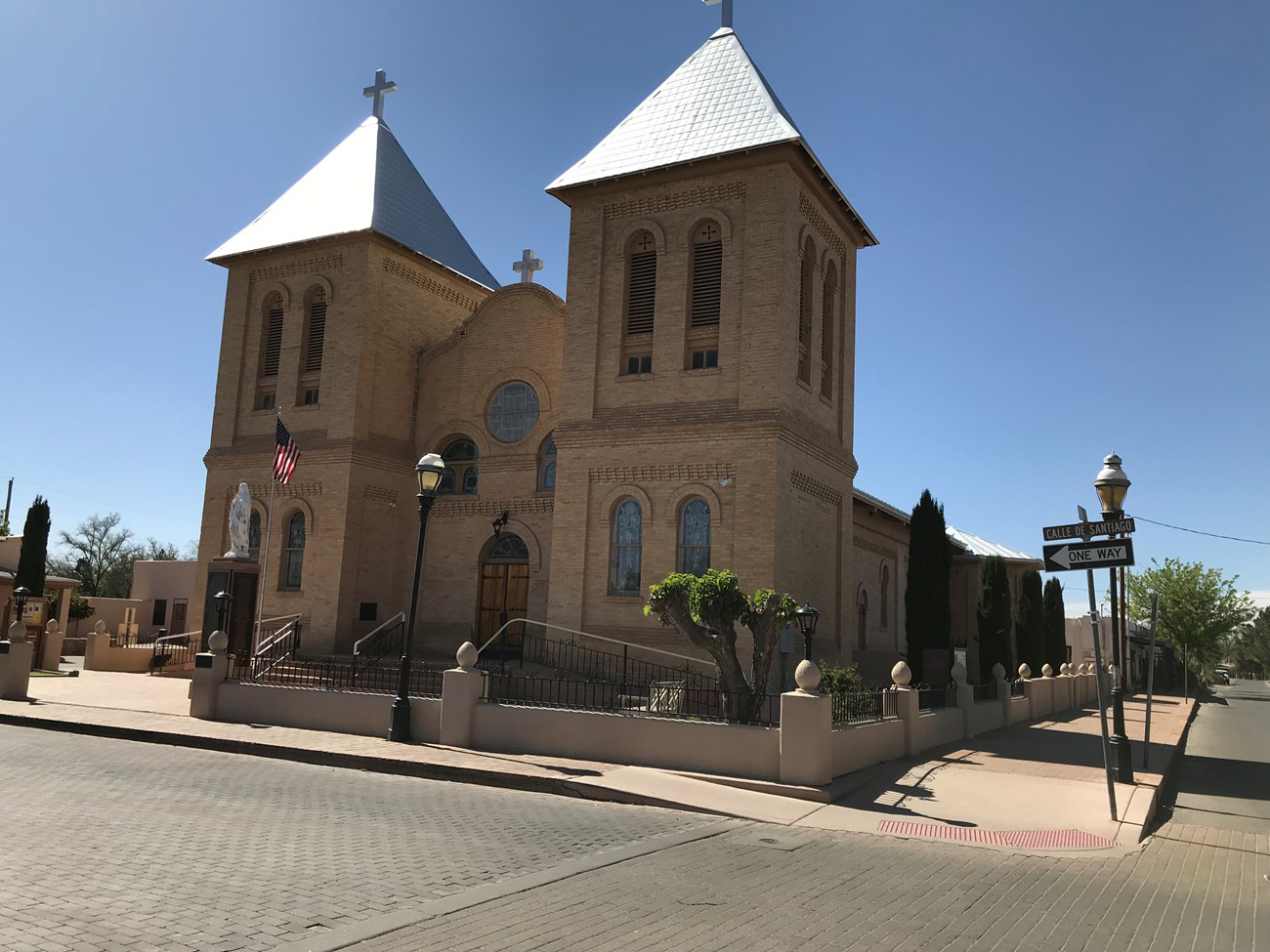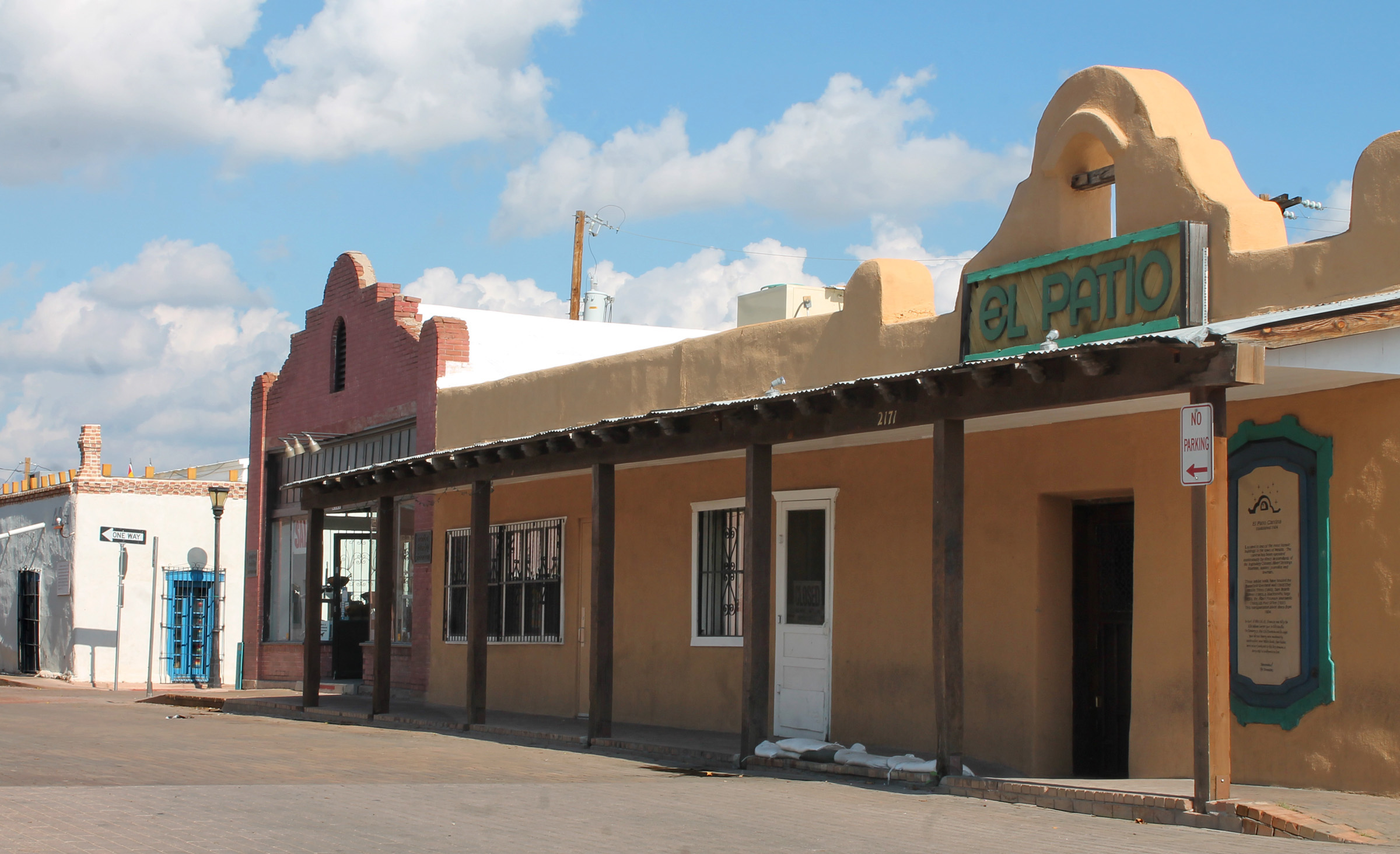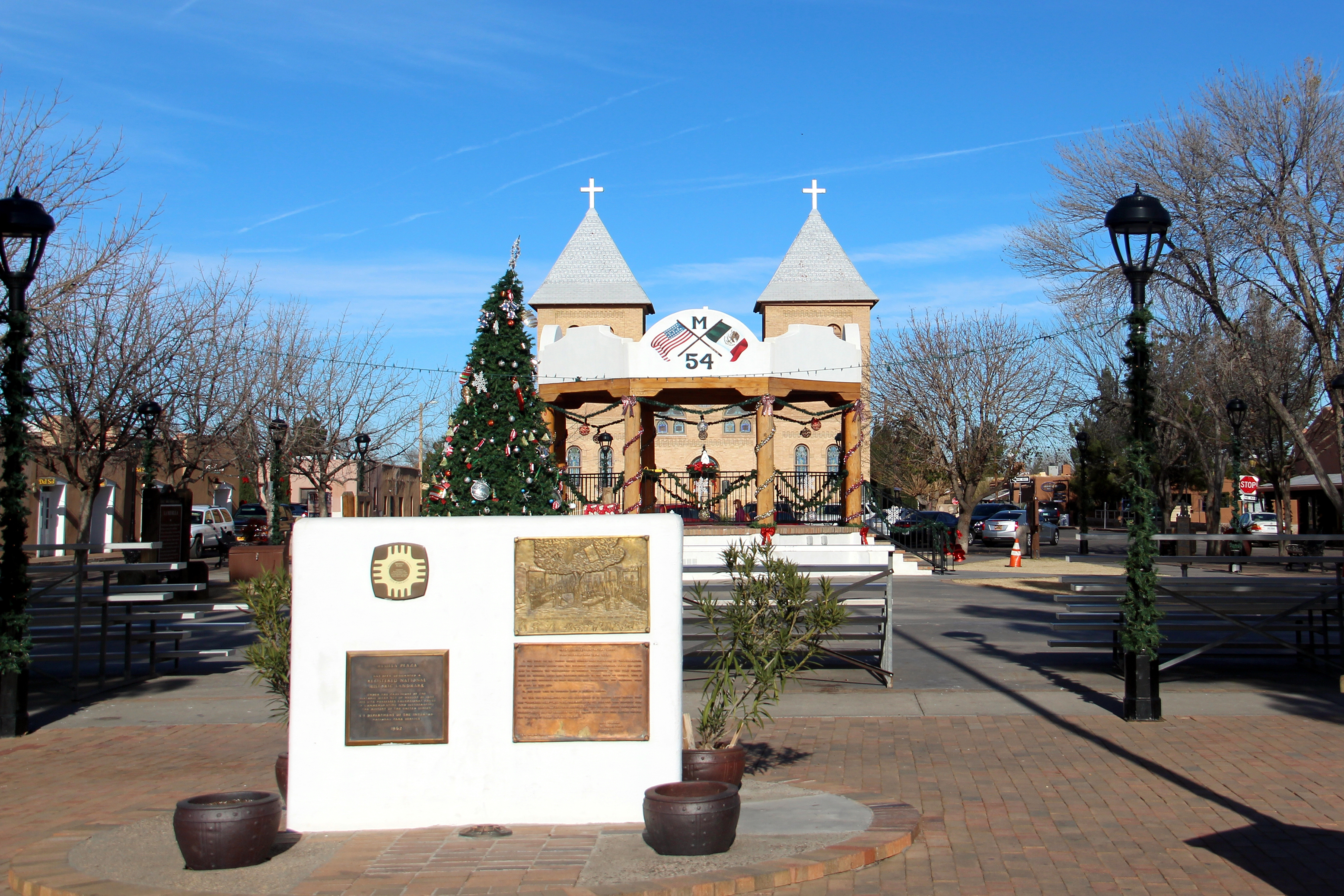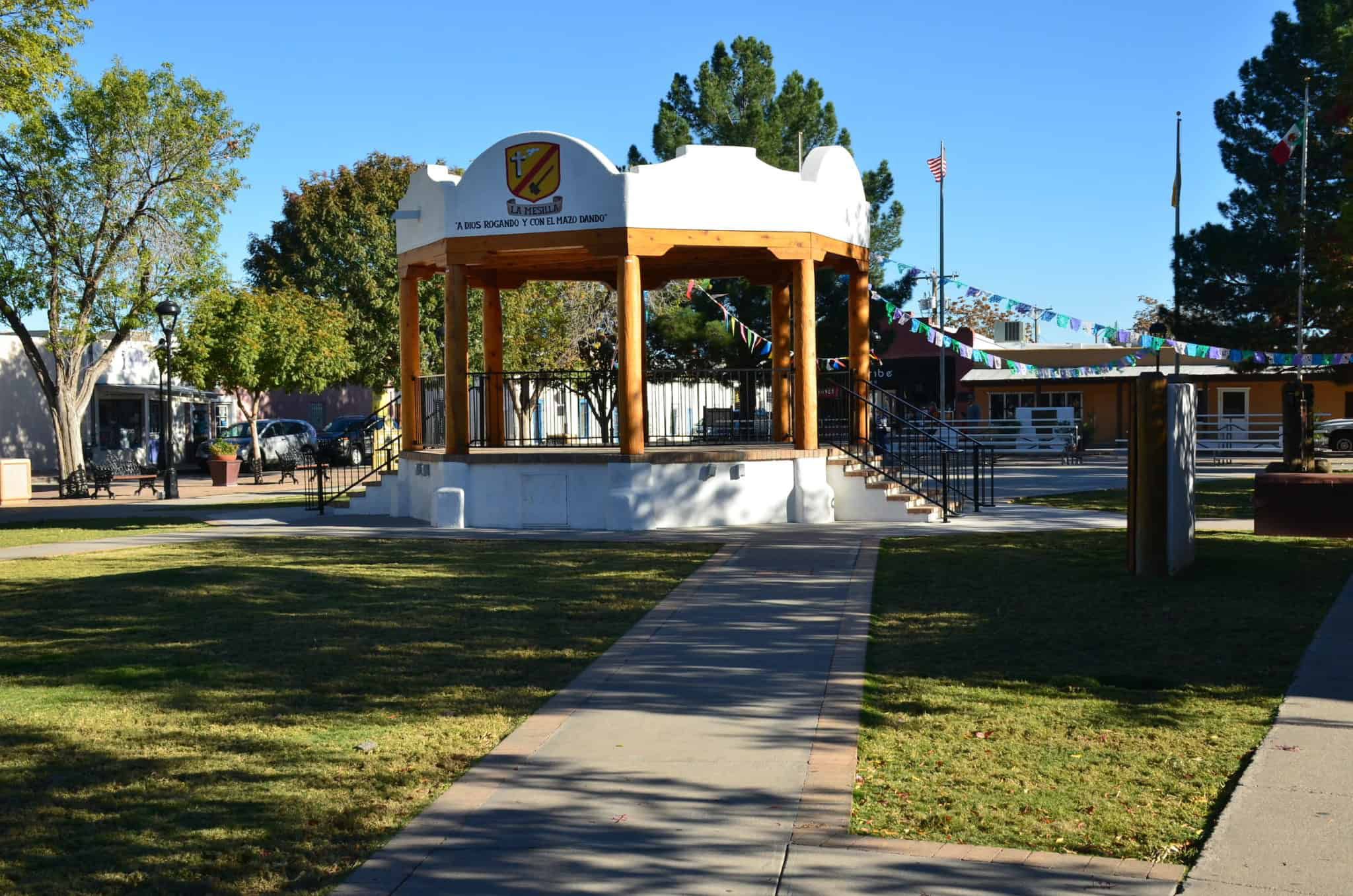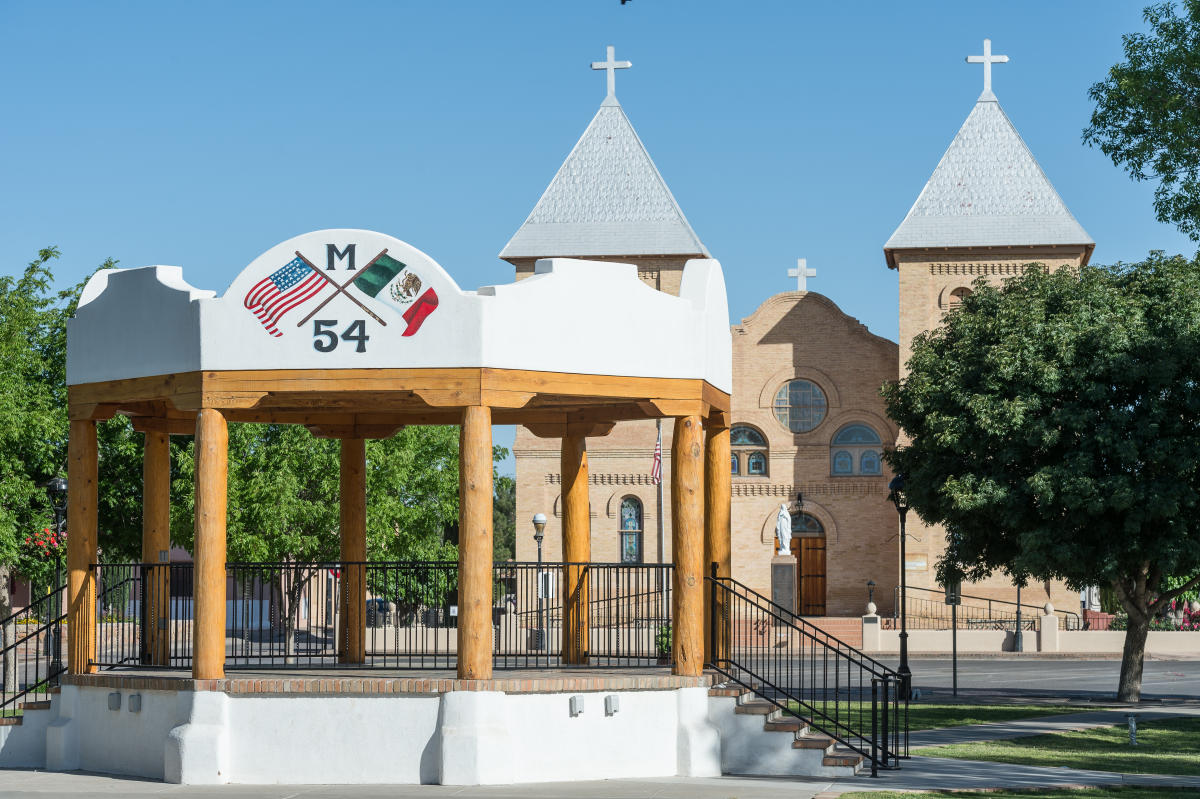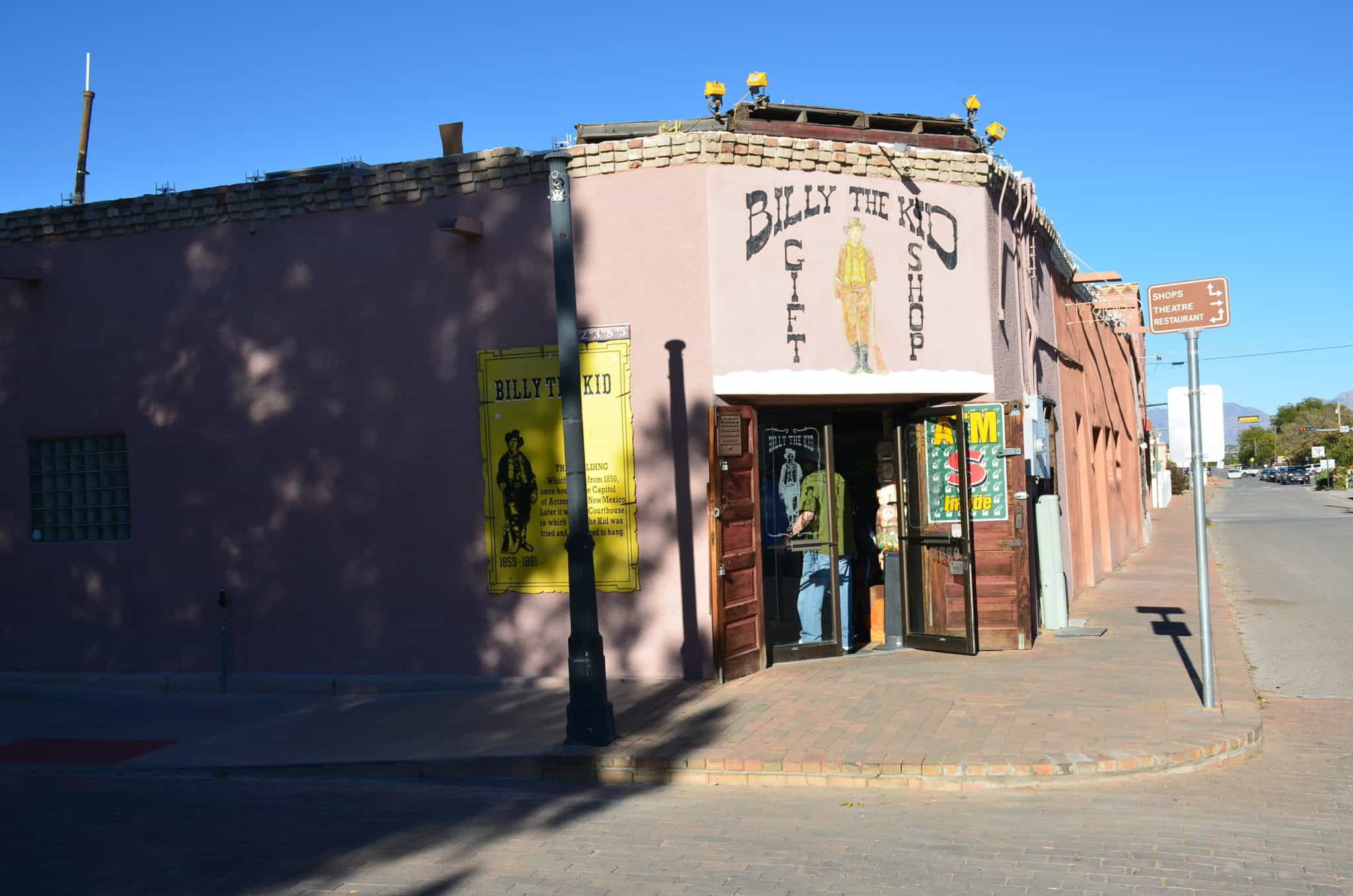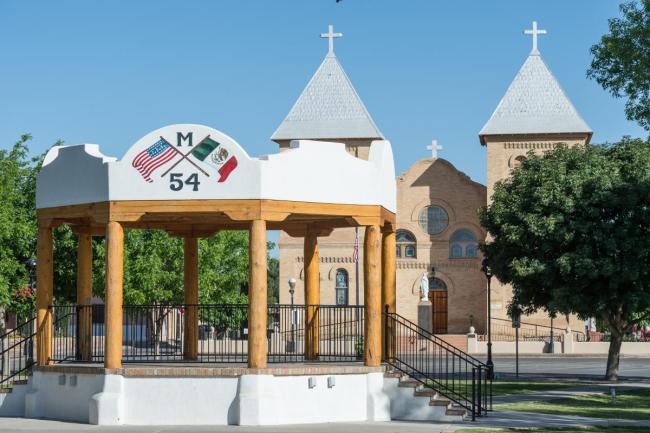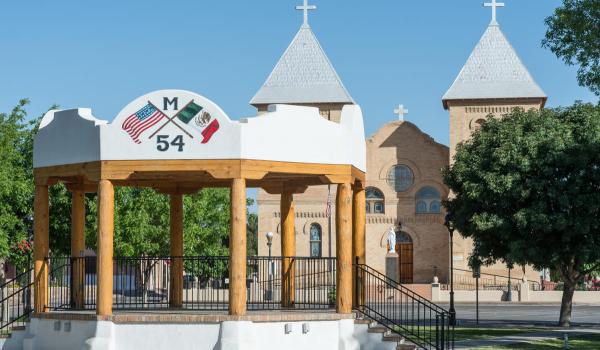Since its founding, the plaza has been the social, spiritual, and economic center of the city. It also serves as the cultural and geographical hub around which the town's narrative revolves. Over time, the paving, landscaping, and the addition of a replica of the 1930s music kiosk transformed a simple plot of land into an inviting space.
The commercial and residential buildings surrounding the plaza reflect Mesilla's growth into a prime location on El Camino Real and the southern route to California, where gold was discovered in 1849.
To the south lies a modest church that, around 1857, was replaced by a traditional adobe structure. This, in turn, gave way in 1906 to the current San Albino Church, a building of yellow bricks with square bell towers, pyramidal spires, and tall arched stained glass windows. Today, it is one of only two basilicas in New Mexico.
When the borders between the United States and Mexico were established, the question of the Mesilla Valley's ownership arose, as the Mexican government believed that the settlers' crossing from the southwest side of the Rio Grande into the valley placed Mesilla in Mexico, but the U.S. government disagreed. This led to Mesilla becoming a no-man's-land amidst political disputes until the Gadsden Purchase officially made it part of U.S. territory in 1854.
Over time, Mesilla has evolved from a rough and rebellious border town into one of New Mexico's great historic communities, preserving its cultural identity and architectural history.




